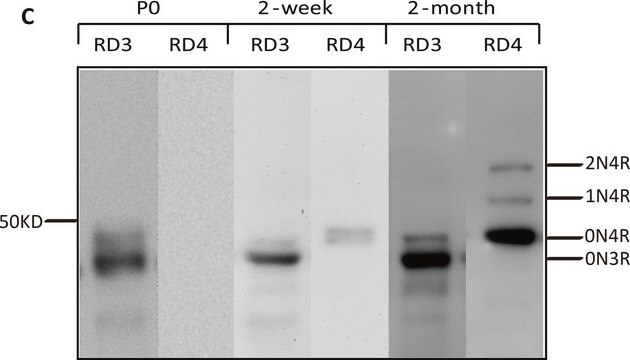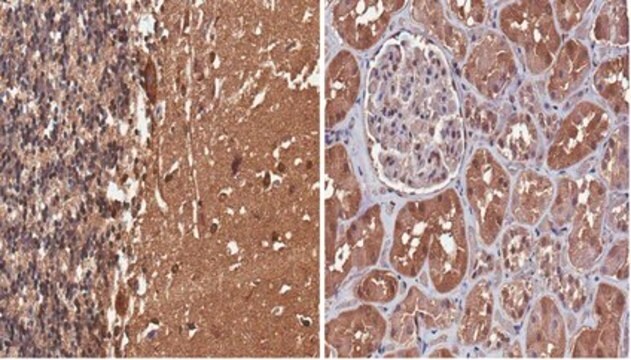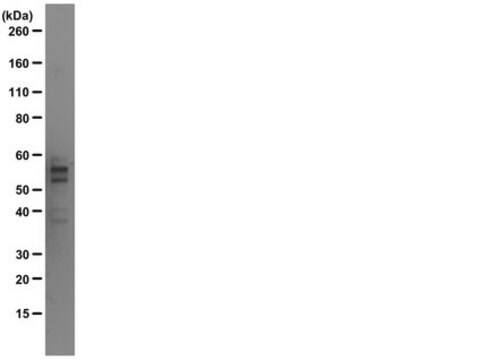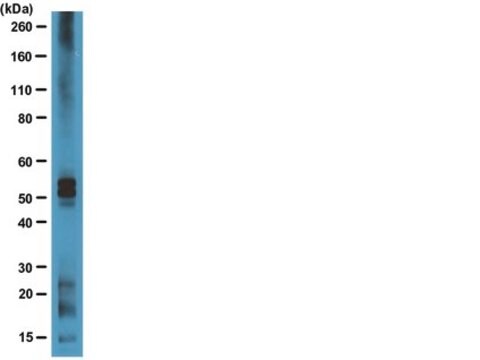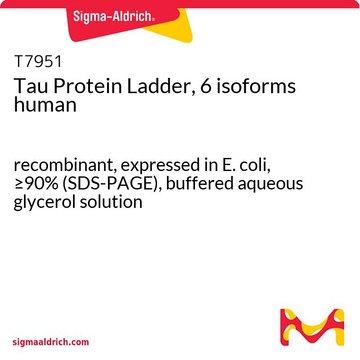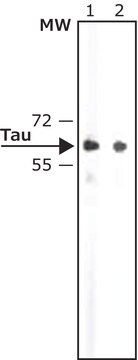05-804
ANTI-TAU (MAPT) Antibody
Upstate, mouse monoclonal, 1E1/A6
Sinônimo(s):
Anti-Tau antibody
About This Item
Produtos recomendados
Nome do produto
Anti-Tau (4-repeat isoform RD4) Antibody, clone 1E1/A6, culture supernatant, clone 1E1/A6, Upstate®
fonte biológica
mouse
Nível de qualidade
forma do anticorpo
culture supernatant
tipo de produto de anticorpo
primary antibodies
clone
1E1/A6, monoclonal
reatividade de espécies
mouse, bovine, human, rat
fabricante/nome comercial
Upstate®
técnica(s)
immunohistochemistry: suitable
western blot: suitable
Isotipo
IgG
nº de adesão NCBI
nº de adesão UniProt
Condições de expedição
wet ice
modificação pós-traducional do alvo
unmodified
Informações sobre genes
human ... MAPT(4137)
mouse ... Mapt(17762) , Mapt(281296)
rat ... Mapt(29477)
Descrição geral
Especificidade
Imunogênio
Aplicação
This antibody has been reported by an independent laboratory to detect Tau (4-repeat isoform RD4) in autoclaved paraffin brain sections. (De Silva, R., 2003;Togo, T., 2002)
Differential Detection of Tauopathies: (Togo, T., 2002)
Neuroscience
Kinases & Phosphatases
Neurodegenerative Diseases
Qualidade
Western Blot Analysis:
A 1:1,000-1:10,000 dilution of this lot detected Tau (4-repeat isoform RD4) in a rat brain cytosolic fraction.
Descrição-alvo
forma física
Frozen at -20°C.
Armazenamento e estabilidade
Handling Recommendations: Upon first thaw, and prior to removing the cap, centrifuge the vial and gently mix the solution. Aliquot into microcentrifuge tubes and store at -20°C. Avoid repeated freeze/thaw cycles, which may damage IgG and affect product performance. Note: Variabillity in freezer temperatures below -20°C may cause glycerol containing solutions to become frozen during storage.
Nota de análise
Rat brain cytosolic fraction.
Outras notas
Informações legais
Exoneração de responsabilidade
Não está encontrando o produto certo?
Experimente o nosso Ferramenta de seleção de produtos.
recomendado
Código de classe de armazenamento
10 - Combustible liquids
Classe de risco de água (WGK)
WGK 2
Certificados de análise (COA)
Busque Certificados de análise (COA) digitando o Número do Lote do produto. Os números de lote e remessa podem ser encontrados no rótulo de um produto após a palavra “Lot” ou “Batch”.
Já possui este produto?
Encontre a documentação dos produtos que você adquiriu recentemente na biblioteca de documentos.
Nossa equipe de cientistas tem experiência em todas as áreas de pesquisa, incluindo Life Sciences, ciência de materiais, síntese química, cromatografia, química analítica e muitas outras.
Entre em contato com a assistência técnica